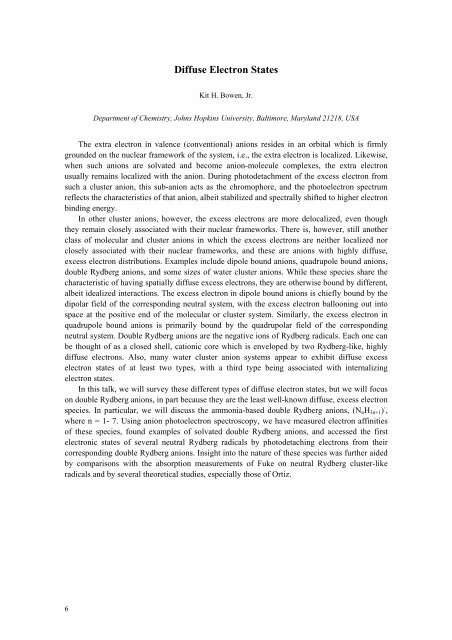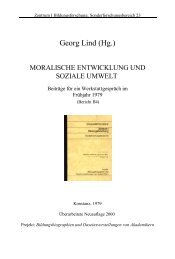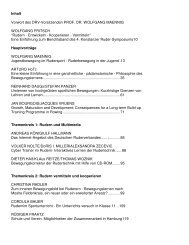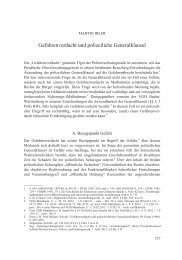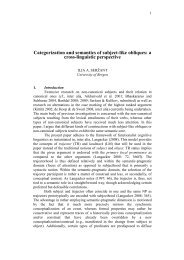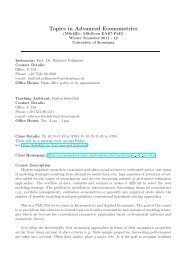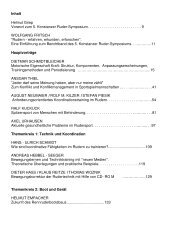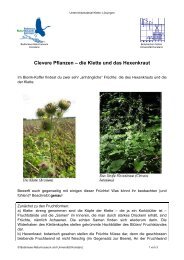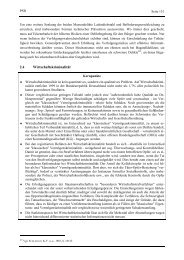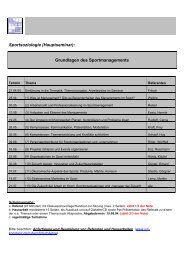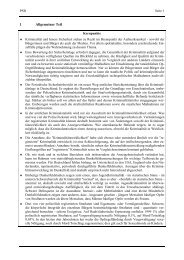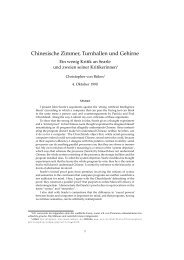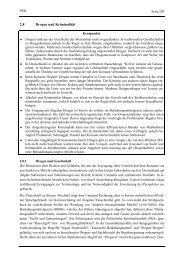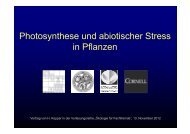Book of Abstracts Book of Abstracts - Universität Konstanz
Book of Abstracts Book of Abstracts - Universität Konstanz
Book of Abstracts Book of Abstracts - Universität Konstanz
You also want an ePaper? Increase the reach of your titles
YUMPU automatically turns print PDFs into web optimized ePapers that Google loves.
6<br />
Diffuse Electron States<br />
Kit H. Bowen, Jr.<br />
Department <strong>of</strong> Chemistry, Johns Hopkins University, Baltimore, Maryland 21218, USA<br />
The extra electron in valence (conventional) anions resides in an orbital which is firmly<br />
grounded on the nuclear framework <strong>of</strong> the system, i.e., the extra electron is localized. Likewise,<br />
when such anions are solvated and become anion-molecule complexes, the extra electron<br />
usually remains localized with the anion. During photodetachment <strong>of</strong> the excess electron from<br />
such a cluster anion, this sub-anion acts as the chromophore, and the photoelectron spectrum<br />
reflects the characteristics <strong>of</strong> that anion, albeit stabilized and spectrally shifted to higher electron<br />
binding energy.<br />
In other cluster anions, however, the excess electrons are more delocalized, even though<br />
they remain closely associated with their nuclear frameworks. There is, however, still another<br />
class <strong>of</strong> molecular and cluster anions in which the excess electrons are neither localized nor<br />
closely associated with their nuclear frameworks, and these are anions with highly diffuse,<br />
excess electron distributions. Examples include dipole bound anions, quadrupole bound anions,<br />
double Rydberg anions, and some sizes <strong>of</strong> water cluster anions. While these species share the<br />
characteristic <strong>of</strong> having spatially diffuse excess electrons, they are otherwise bound by different,<br />
albeit idealized interactions. The excess electron in dipole bound anions is chiefly bound by the<br />
dipolar field <strong>of</strong> the corresponding neutral system, with the excess electron ballooning out into<br />
space at the positive end <strong>of</strong> the molecular or cluster system. Similarly, the excess electron in<br />
quadrupole bound anions is primarily bound by the quadrupolar field <strong>of</strong> the corresponding<br />
neutral system. Double Rydberg anions are the negative ions <strong>of</strong> Rydberg radicals. Each one can<br />
be thought <strong>of</strong> as a closed shell, cationic core which is enveloped by two Rydberg-like, highly<br />
diffuse electrons. Also, many water cluster anion systems appear to exhibit diffuse excess<br />
electron states <strong>of</strong> at least two types, with a third type being associated with internalizing<br />
electron states.<br />
In this talk, we will survey these different types <strong>of</strong> diffuse electron states, but we will focus<br />
on double Rydberg anions, in part because they are the least well-known diffuse, excess electron<br />
species. In particular, we will discuss the ammonia-based double Rydberg anions, (NnH3n+1) - ,<br />
where n = 1- 7. Using anion photoelectron spectroscopy, we have measured electron affinities<br />
<strong>of</strong> these species, found examples <strong>of</strong> solvated double Rydberg anions, and accessed the first<br />
electronic states <strong>of</strong> several neutral Rydberg radicals by photodetaching electrons from their<br />
corresponding double Rydberg anions. Insight into the nature <strong>of</strong> these species was further aided<br />
by comparisons with the absorption measurements <strong>of</strong> Fuke on neutral Rydberg cluster-like<br />
radicals and by several theoretical studies, especially those <strong>of</strong> Ortiz.


